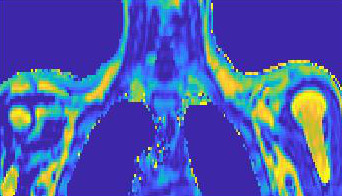Physiology of Human Brown Adipose Tissue
Project Description
 About 10 years ago, several research groups published the unexpected finding that functional brown adipose tissue (BAT) exists in adult humans. Although there has been intensive research during the time since those discoveries, fascinating questions persist about BAT. These include BAT’s potential involvement in processes such as the thermoregulatory response to cold, weight maintenance, and lipid and glucose homeostasis; how these functions are controlled physiologically; and how BAT interacts with other organs in the body during the period following a meal and during cold exposure.
About 10 years ago, several research groups published the unexpected finding that functional brown adipose tissue (BAT) exists in adult humans. Although there has been intensive research during the time since those discoveries, fascinating questions persist about BAT. These include BAT’s potential involvement in processes such as the thermoregulatory response to cold, weight maintenance, and lipid and glucose homeostasis; how these functions are controlled physiologically; and how BAT interacts with other organs in the body during the period following a meal and during cold exposure.
Our specific aims for this project are:
- To advance non-invasive imaging methods for studying the structure and function of brown adipose tissue and
- To understand the interactions among skeletal muscle, liver, and white and brown adipose tissues during the post-prandial period and cold exposure, both in health and in states of metabolic disease.
Collaborators
Our collaborators on this project include Maciej Buchowski, PhD, Will Grissom, PhD, Ted Towse PhD, and Greg Walker PhD.
Funding
This project is funded by an R01 award from the National Institute of Diabetes and Digestive and Kidney Disorders.
Representative Publications
Bush EC, Gifford A, Coolbaugh CL, Towse TF, Damon BM*, Welch EB. (2018). Fat-water phantoms for magnetic resonance imaging validation: Flexible, scalable protocol. Journal of Visualized Experiments. September 7, 2018: doi:10.3791/57704. *Corresponding author.
Coolbaugh CL, Bush EC, Galenti ES, Welch EB, Towse TF. (2018). An individualized, perception-based protocol to investigate human physiological responses to cooling. Frontiers in Physiology. 9:195. doi: 10.3389/fphys.2018.00195.
Gifford A, Towse TF, Walker RC, Avison MJ, Welch EB. (2016). Characterizing active and inactive brown adipose tissue in adult humans using PET-CT and MR imaging. Am J Physiol Endocrinol Metab 311:E95.